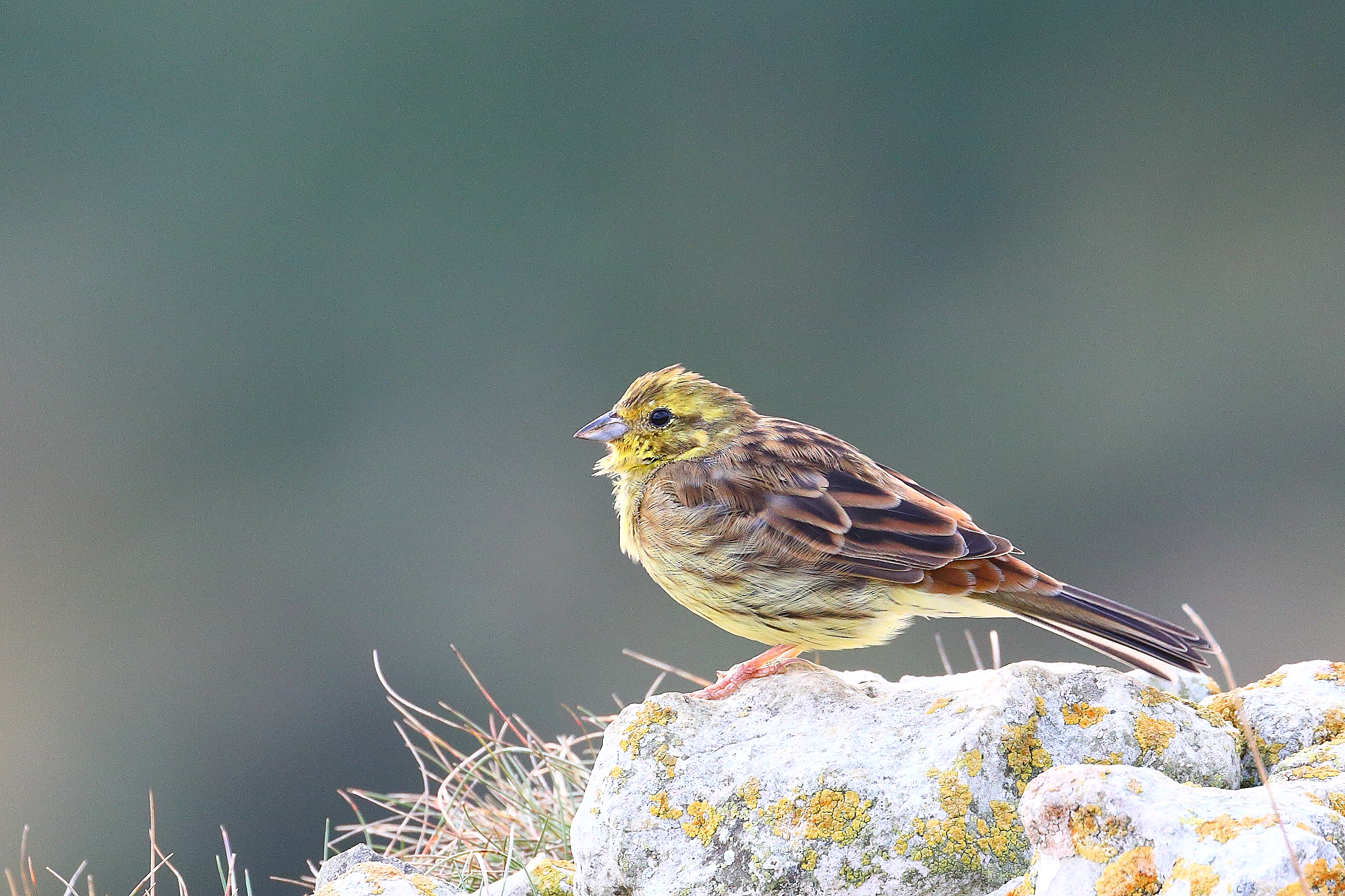Emberiza citrinella
Enlarge text Shrink textThe yellowhammer (Emberiza citrinella) is a passerine bird in the bunting family that is native to Eurasia and has been introduced to New Zealand and Australia. Most European birds remain in the breeding range year-round, but the eastern subspecies is partially migratory, with much of the population wintering further south. The male yellowhammer has a bright yellow head, streaked brown back, chestnut rump, and yellow under parts. Other plumages are duller versions of the same pattern. The yellowhammer is common in open areas with some shrubs or trees, and forms small flocks in winter. Its song has a rhythm like "A little bit of bread and no cheese". The song is very similar to that of its closest relative, the pine bunting, with which it interbreeds. Breeding commences mainly in April and May, with the female building a lined cup nest in a concealed location on or near the ground. The three to five eggs are patterned with a mesh of fine dark lines, giving rise to the old name for the bird of "scribble lark" or "writing lark". The female incubates the eggs for 12–14 days prior to hatching, and broods the altricial downy chicks until they fledge 11–13 days later. Both adults feed the chick in the nest and raise two or three broods each year. The nest may be raided by rodents or corvids, and the adults are hunted by birds of prey. Yellowhammers feed on the ground, usually in flocks outside the breeding season. Their diet is mainly seeds, supplemented by invertebrates in the breeding season. Changes to agricultural practices have led to population declines in western Europe, but its large numbers and huge range mean that the yellowhammer is classed as being of least concern by the International Union for Conservation of Nature. This conspicuous yellow bird has inspired poems by Robert Burns and John Clare, and its characteristic song has influenced musical works by Beethoven and Messiaen. Children's writer Enid Blyton helped to popularise the standard English representation of the song.
Read more on Wikipedia >
 Topic
Topic










